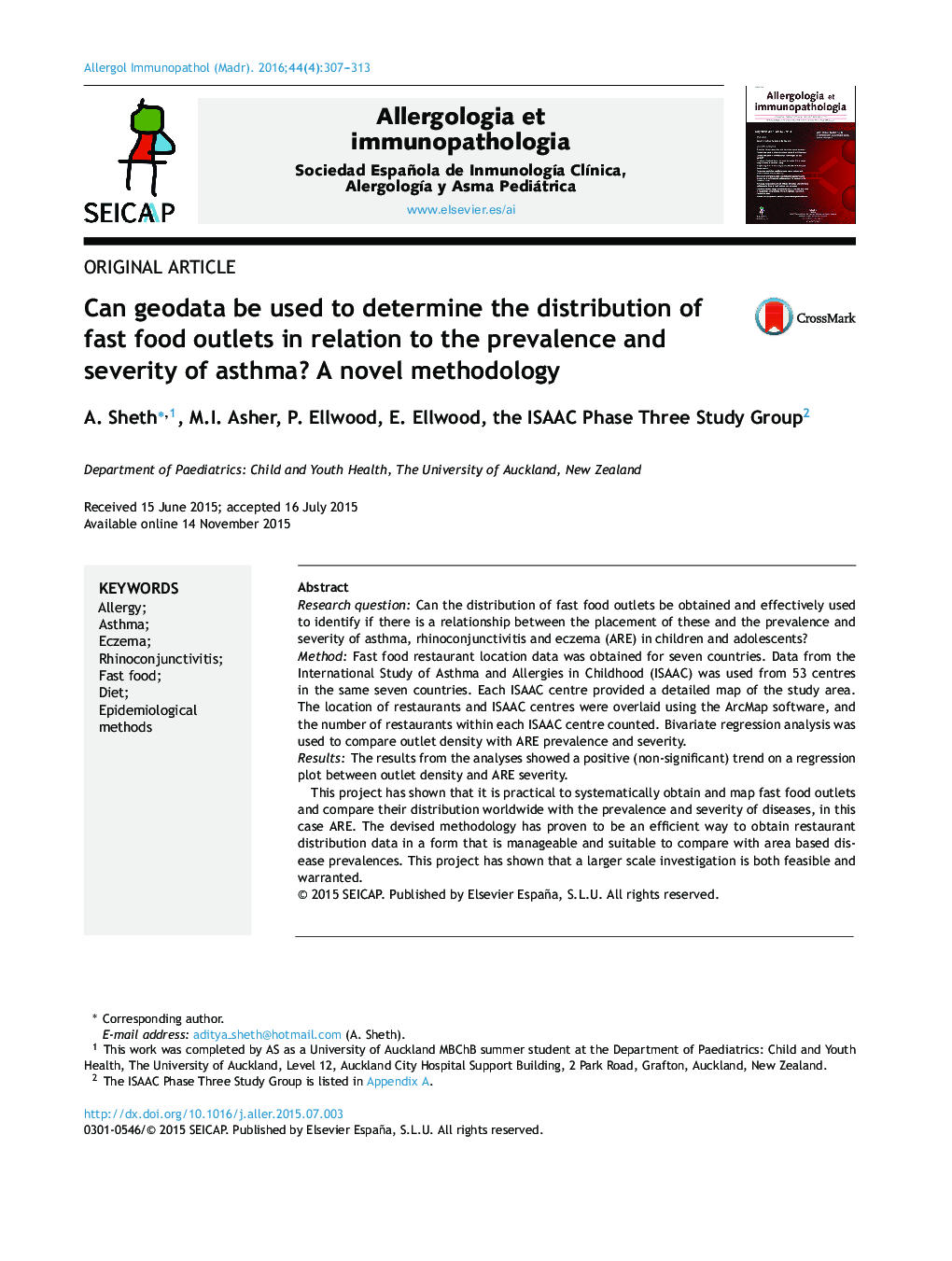| Article ID | Journal | Published Year | Pages | File Type |
|---|---|---|---|---|
| 3339565 | Allergologia et Immunopathologia | 2016 | 7 Pages |
Research questionCan the distribution of fast food outlets be obtained and effectively used to identify if there is a relationship between the placement of these and the prevalence and severity of asthma, rhinoconjunctivitis and eczema (ARE) in children and adolescents?MethodFast food restaurant location data was obtained for seven countries. Data from the International Study of Asthma and Allergies in Childhood (ISAAC) was used from 53 centres in the same seven countries. Each ISAAC centre provided a detailed map of the study area. The location of restaurants and ISAAC centres were overlaid using the ArcMap software, and the number of restaurants within each ISAAC centre counted. Bivariate regression analysis was used to compare outlet density with ARE prevalence and severity.ResultsThe results from the analyses showed a positive (non-significant) trend on a regression plot between outlet density and ARE severity.This project has shown that it is practical to systematically obtain and map fast food outlets and compare their distribution worldwide with the prevalence and severity of diseases, in this case ARE. The devised methodology has proven to be an efficient way to obtain restaurant distribution data in a form that is manageable and suitable to compare with area based disease prevalences. This project has shown that a larger scale investigation is both feasible and warranted.
